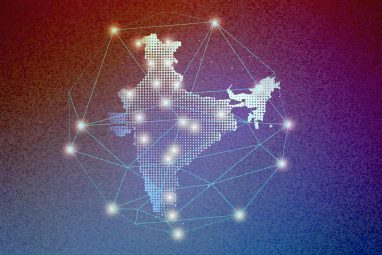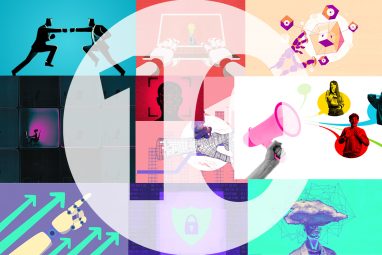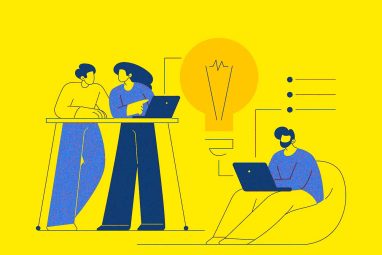How AI Is Rewriting India’s Diagnostic and Healthcare Landscape
Speaking to MIT SMR India, Bargava Subramanian, Chief AI and Data Officer at 5C Network, a leading digital diagnostics platform in India, said, “For X-rays, the entire inference time is less than a minute. The AI can process and generate results within a few seconds.”
News
- Musk’s xAI Buys Third Data Center Site to Expand Computing Capacity
- AI May Add $1.7 Trillion to India’s Economy by 2035
- Reliance lays out draft AI manifesto, signals shift to AI-native operating model
- AI Job Losses Could Accelerate By 2026, Geoffrey Hinton Warns
- India’s Data Center Capacity Seen Jumping Tenfold to 14GW by 2035
- SoftBank Bets on AI Backbone With $3 Billion DigitalBridge Deal

Every morning, the waiting room of a well-known diagnostic chain near Kolkata’s Howrah Station sees an unusual rush. Patients arrive from far corners of India’s Northeast. Their mission is urgent and time-bound: get a medical scan, collect a diagnostic report, and catch the 1:30 pm train back home, all within a few hours.
These patients often travel 300 to 400 km to Kolkata because their hometowns, tier-II and tier III cities, lack timely diagnostic infrastructure. For them, staying overnight isn’t always financially feasible.
Traditionally, turnaround times in smaller towns could stretch from three to seven days. This is where AI is making an impact.
Speaking to MIT SMR India, Bargava Subramanian, Chief AI and Data Officer at 5C Network, a leading digital diagnostics platform in India, said, “For X-rays, the entire inference time is less than a minute. The AI can process and generate results within a few seconds.”
For more complex imaging, such as CT scans, which are essentially 3D X-rays consisting of about 2,000 images, the processing time is two to three minutes. MRIs, which have multiple sequences and vary in complexity, also take roughly the same time.
These rapid diagnostics are enabled by AI systems that use advanced vision-language models to not only identify abnormalities but also draft clinically relevant reports, bridging the gap between medical imaging and clinical decision-making.
AI Tech Applied to Medical Imaging
India’s healthcare landscape is anything but uniform. Diagnostic services vary widely between metros, towns, and rural blocks, not just in terms of availability but also in expertise. In such a setting, scalable AI needs to be both adaptable and frugal.
“Our AI models are modular and lightweight. A diagnostic center can choose to use only chest X-rays or brain CTs, and the system runs on basic hardware. No supercomputers or edge GPUs required,” said Subramanian.
5C Network’s philosophy is deeply rooted in collaboration, especially with radiologists who are often wary of being replaced by black-box technologies. “They are not just users, but collaborators in our development loop. Every AI output is explainable. We highlight the region of interest, indicate the likely finding, and provide a confidence score. This transparency builds trust,” he said.
India’s Disease Landscape
Unlike Western countries, India sees high volumes of diseases like tuberculosis (TB), which are almost non-existent in developed nations. This gives Indian innovators a unique advantage in training AI models for conditions that are rare elsewhere.
“While TB hasn’t been eradicated globally, its incidence in the West is so low that doctors rarely encounter it. In contrast, we see it all the time here,” said Subramanian.
Another example is gallbladder-related ailments. While gallstones are common globally, the Ganges belt, particularly around Varanasi, sees a disproportionately high number of gallbladder cancer cases, a rarity in other parts of the world.
Such regional prevalence of long-tail diseases, coupled with India’s sheer population size, generates a vast dataset ideal for building robust AI systems. “Even a 0.1% incidence rate translates into millions of scans. That’s why I believe some of the best healthcare AI innovations will emerge from India,” he said.
It’s not just private players making a difference. Wadhwani AI, a non-profit focused on AI for social good, is playing a critical role in India’s public health system. As an official AI partner to the Central TB Division (CTD), Wadhwani AI is helping the National TB Elimination Programme become AI-ready.
One of their key innovations is using AI to interpret Line Probe Assay (LPA) tests, which determine drug resistance in TB patients. The AI decodes the pattern of light and dark bands on LPA strips, each band representing a different region of the TB bacterium’s genome.
This AI-powered interpretation is crucial in a country where early diagnosis and treatment can save thousands of lives and prevent drug-resistant strains from spreading. “We are developing multiple interventions across the TB care cascade. Our goal is to support faster, more accurate diagnosis and treatment decisions,” said Subramanian.
Healthcare Future Rewritten by AI
For radiologists, both experienced and early-career, AI has become a major time-saver.
Traditionally, reviewing a CT scan with 2,000 images would take significant time and effort to find the issue and complete a report. A radiologist might manage to do 20 scans a day. But with AI-powered tools, they can now generate 100 CT or MRI reports daily. For X-rays, that number goes up to 500 reports a day. So, 5C Network has seen a 5x to 10x increase in productivity as a result.
AI also takes over routine tasks that don’t require medical expertise but are necessary. Take a spine MRI, for example: every disc needs to be measured for the orthopedic surgeon to make treatment decisions. That’s essentially a geometry problem, not something a medical degree is required for. AI can do these measurements quickly and accurately. By automating such routine parts of the workflow, radiologists can focus more on the actual diagnosis rather than repetitive tasks. This has led to a noticeable improvement in both efficiency and accuracy.
Subramanian said, “We’ve also integrated AI directly into our reporting platform. Anyone using our software gets access to these tools. They see a draft report with automated measurements already populated. It helps them work faster and with greater precision.”
5C also has its team of radiologists who validate these reports. Their review includes 11 automated AI-powered checks before the reports go to human radiologists for final clearance.
And that’s the real promise of AI in Indian healthcare.




